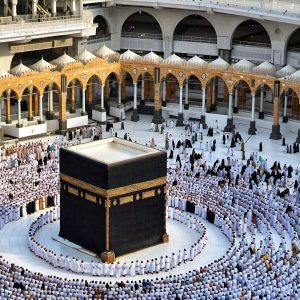HAJJ IN A MODERN WORLD: CHALLENGES AND OPPORTUNITIES

Hajj the annual pilgrimage to Makkah is one of Islam’s most profound acts of worship. Its sacred rites remain as they were in the time of Prophet Ibrahim and Prophet Muhammad (peace be upon them), yet the world around the pilgrimage has changed dramatically. Advances in travel, communication, and infrastructure have transformed the experience, offering remarkable conveniences while introducing new challenges.
CONTEMPORARY CHALLENGES
Overcrowding and Logistics
More than two million pilgrims converge on the same holy sites within a few days. Despite advanced planning and crowd-control measures, the sheer scale of this gathering brings congestion, delays, and ongoing safety concerns.
Rising Costs
Air travel, accommodation, and service fees have steadily increased, placing financial strain on many Muslims who long to fulfill this once-in-a-lifetime obligation.
Environmental Impact
Millions of visitors inevitably generate waste and strain limited natural resources. Protecting the sacred environment while accommodating such vast numbers is an urgent responsibility.
Spiritual Distractions
While technology simplifies travel and communication, constant connectivity and the pull of social media can divert attention from the deep reflection and worship at the heart of Hajj.
NEW OPPORTUNITIES
Improved Access and Safety
Commercial flights and modern infrastructure allow pilgrims from every corner of the globe to reach Makkah in hours rather than weeks. Air-conditioned tents, upgraded transport systems, and comprehensive medical services make the journey safer and more manageable.
Global Unity and Cultural Exchange
Hajj has always been a gathering of nations, but today’s unprecedented diversity enriches the experience. Pilgrims share cultures, languages, and perspectives, reinforcing Islam’s message of equality and brotherhood.
Education and Preparation
Digital resources from interactive apps to multilingual guides help pilgrims understand the rituals and their spiritual significance before and during the journey.
Sustainable Innovation
Initiatives to reduce waste, harness renewable energy, and manage crowds more efficiently show how modern technology can support environmental stewardship while preserving tradition.
HONORING TRADITION IN A CHANGING WORLD
The essential rites entering ihram, standing at Arafat, circling the Ka‘bah, and stoning the Jamarat remain unchanged, anchoring pilgrims in timeless devotion. Modern tools should enhance, not overshadow, the core purpose: submission to Allah and renewal of faith.
Conclusion
Hajj in the modern era stands at the crossroads of ancient devotion and contemporary progress. By embracing innovation responsibly and safeguarding the pilgrimage’s spiritual heart, Muslims can ensure that Hajj continues to inspire humility, unity, and transformation for generations to come.

